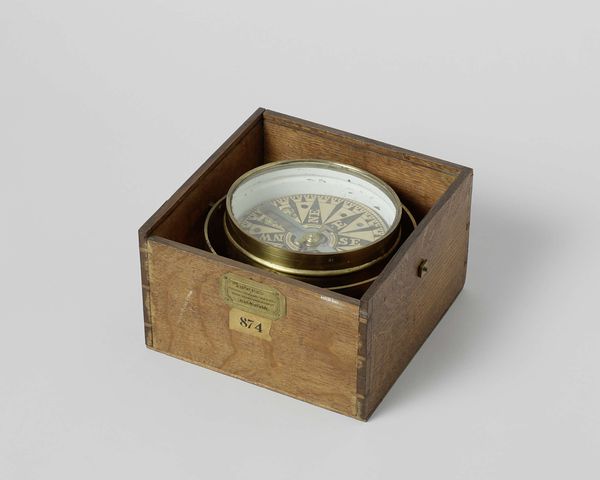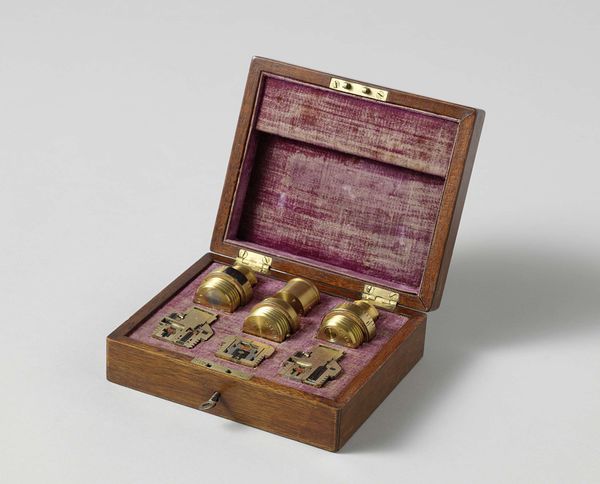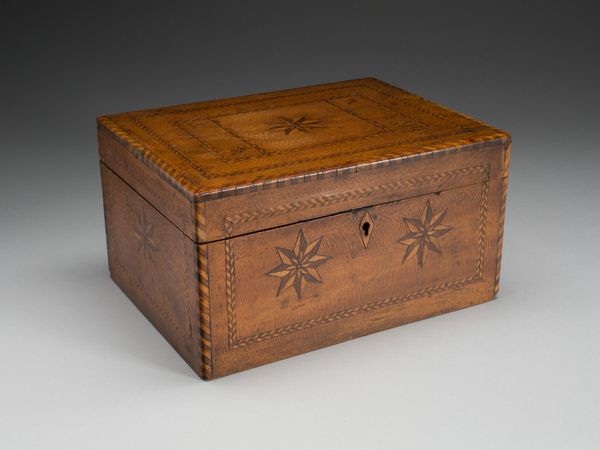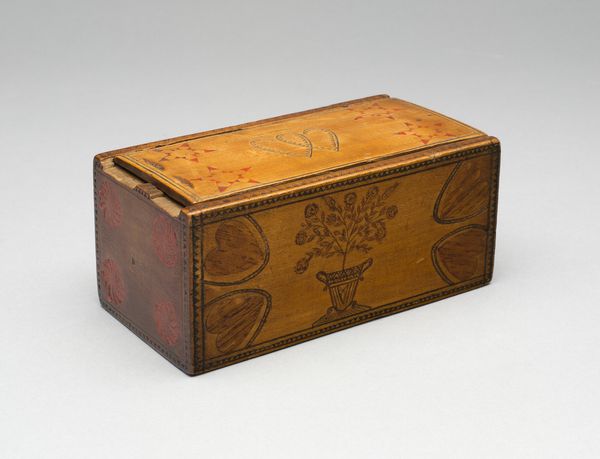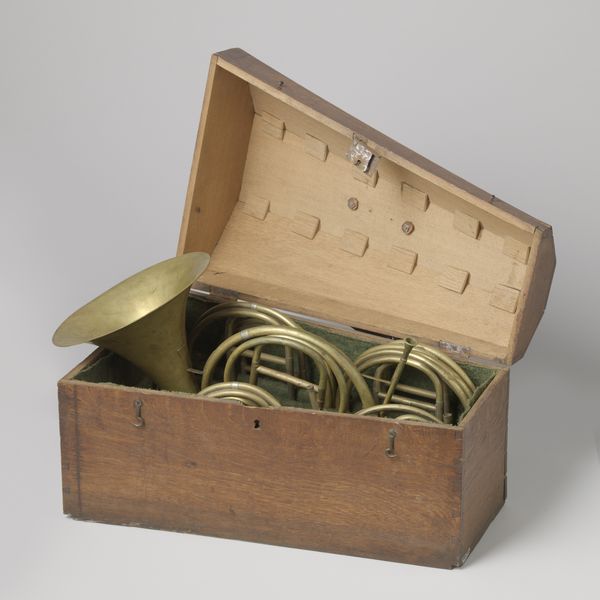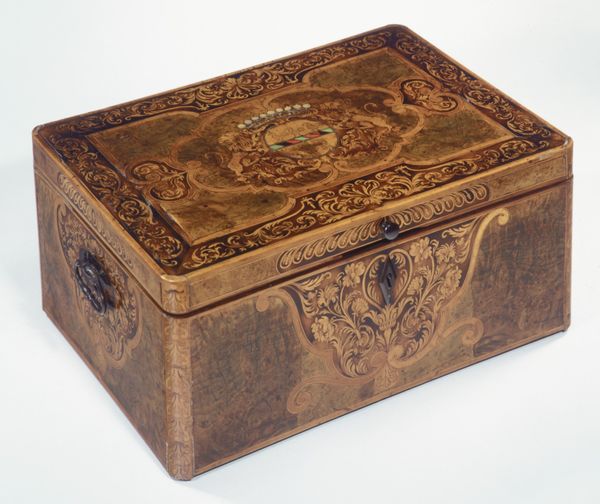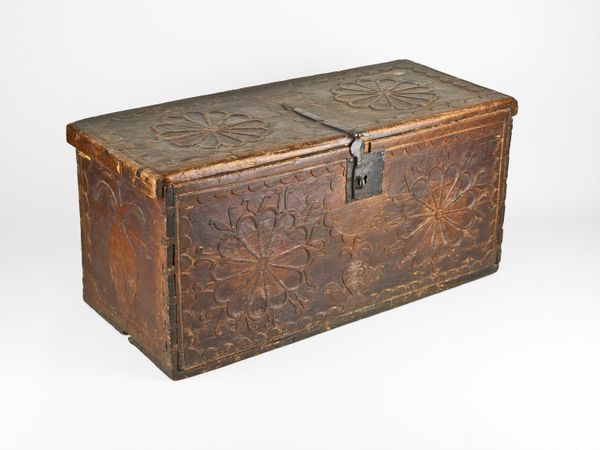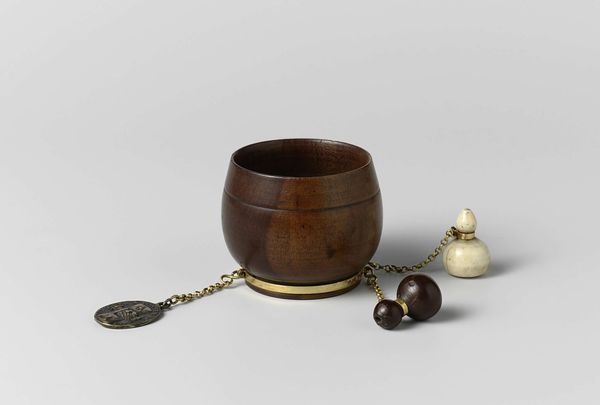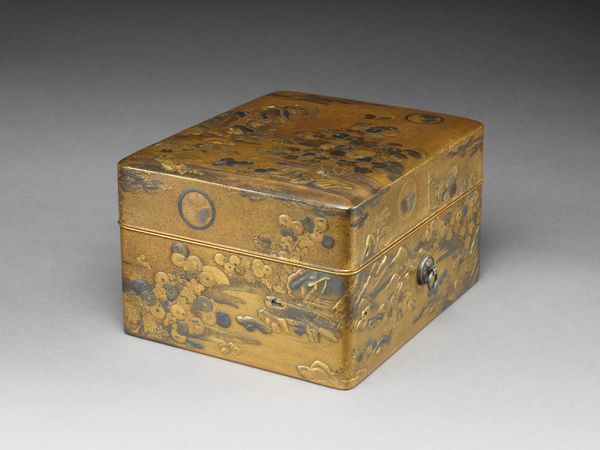
metal, wood, ivory
#
metal
#
11_renaissance
#
stoneware
#
ceramic
#
wood
#
ivory
#
miniature
Dimensions: diameter 48 mm, height 82 mm, width 75 mm
Copyright: Rijks Museum: Open Domain
Curator: Let's explore this fascinating prayer nut, crafted between 1500 and 1530, attributed to Adam Dircksz. Its presence nestled in this box with decorative accents is truly captivating. Editor: Whoa, that thing is tiny! It's like a secret treasure hidden away in its own little ornate chest. I wonder what kind of wishes were whispered into that thing. Curator: Its compact form serves to enhance its profundity; observe how this object merges the spiritual and the material. Fashioned with ivory, metal and wood. Editor: Yeah, but there's something almost melancholic about it, isn't there? The dark velvet lining of the box and the silver prayer nut give me that impression. It's beautiful but also gives off a somber mood. Curator: Perhaps that sentiment arises from the period's preoccupations with faith and mortality, mirrored in the craftsmanship and miniaturization as a metaphor for introspection. Note also, the metallic surfaces—their cold gleam contrasts sharply with the presumed warmth of prayer, creating an intriguing duality. Editor: I see your point. It is an introspective jewel box. What really grabs me is the detail. Imagine the level of skill needed to carve something that small, especially back then! Curator: Indeed. The minute carving certainly reflects not only artistry but also the patron's affluence, indicating an intimate relationship between devotional practice and social standing. Consider too the semiotic significance of this “nut”—a seed, a symbol of potential and regeneration, juxtaposed with religious symbolism. Editor: It feels almost too precious, too hidden away to be really useful for daily prayer. Maybe it was more of a status symbol than anything else? A wearable art piece for personal reflection? Curator: A plausible interpretation, albeit not negating its intrinsic sacred value. Let us appreciate how objects like these function as both artistic masterpieces and historical records, offering invaluable insights into their era. Editor: Well, looking at it, you really do get a sense of lives lived long ago and their beliefs—it's a powerful, thought-provoking little gem, even though it is miniature!
Comments
rijksmuseum about 2 years ago
⋮
This tiny boxwood ball, mounted in silver, is incredibly finely carved. It is a ‘prayer nut’, intended to be hung from a belt or a rosary, and was meant as an aid to prayer. The owner moreover would certainly have enjoyed showing off such a superbly crafted and precious jewel. Seen at the top is the Nativity and at the bottom the Adoration of the Magi.
Join the conversation
Join millions of artists and users on Artera today and experience the ultimate creative platform.
